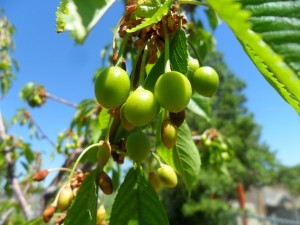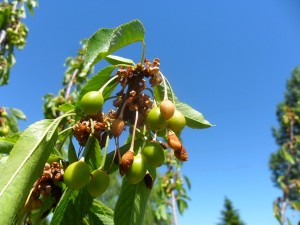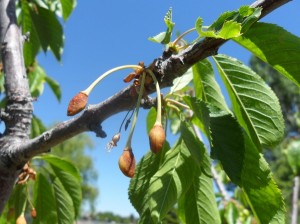At the end of January 2012, the Christian Science Monitor published a story about a study done in the U.S. and Canada, which said, in a round-about way, that particulate matter in the air causes Ice Ages, not global warming.
A few days ago the Japanese Meteorological Agency reported the results of their a study, which said ocean temperatures have increased.
I’ve been following the research on supposed global warming, with doubts about most of the claims, because traditional scientific hypothesis always said that large amounts of particulate matter in the air, either from volcanoes or man made pollution, causes cooling.
The latest study in the U.S. backs that up, but they found more than one cause. What the researchers discovered is that changes in the weather are caused by ‘triggers’. Regarding Ice Ages; they found that it’s a combination of major triggers such as decreased activity from the Sun, increased particulate matter in the air and the depletion of the ozone in the upper atmosphere.
Although we’ve certainly had increased particulate matter in the air (from both pollution and volcanoes) the Japanese study showed that temps deep in the ocean have been rising about 0.02 Celsius (32.036 Fahrenheit) per year over the past decade! They say the deep ocean temps are now an average of 0.15 C (32.27 F) warmer than 60 years ago.
But note that it’s deep ocean temperatures, not surface level. The temp readings were taken at about 700 meters (2,297 feet) depth. This means, to me, that the latest Japanese study says global warming originates inside the Earth.
Can there be warming and cooling happening, seemingly at the same time? Yes. There are hypothesis that say they are interactive cycles, one leading to the other. This would mean that humans have nothing to do with it.
Studies have shown that decreased ozone in the upper atmosphere leads to a cooling of the atmosphere. Everyone should know that there are now huge holes in the ozone above the North and South Poles. Scientists say this is why ice forms at those regions, and why most of the Ice Age glaciers originate from the Poles.
Some scientists also say that ozone depletion is connected to Sun activity (not just pollution). Is the Sun taking a break? Back in summer 2011, astronomers reported that Sun activity was declining. Now, parts of Europe are being hit with a micro ice age (have you seen the pics of cars and buildings covered with inches of ice, which formed overnight?).
Another interesting thing is that even though South America is in the middle of summer right now, Peru’s mountainous areas have been hit with record cold temps and snowfall (at least 3,000 Alpacas froze to death)!
There are other reports that show a connection between depletion of ozone and the weakening of the Earth’s magnetic field. A few years ago PBS did a report that showed the magnetic poles have become extremely weak, and that mini poles were popping up in other parts of the world (specifically one near south western Africa).
Sun activity was high in the past decade, which just happens to be when many people were crying “Global Warming”. But increased Sun activity can only account for surface warming, and atmospheric warming, and it’s obvious now that many parts of the surface of the Earth are cooling.
Increased ocean temperatures, at more than 2,000 feet down, can only be caused by activity within the Earth. Yes, there is an increase of earthquake and volcanic activity. Especially around the Pacific Ring of Fire. Already there have been seven “significant” (magnitude 6.5 or higher) earthquakes in the first month of 2012, and all seven have happened around the Ring of Fire (or adjacent to it).
In total there have been more than 500 earthquakes around the Pacific Ring of Fire, since January 1, 2012!
Activity inside the Earth also affects the magnetic field. One scientists described the core of the Earth more like an old wind up watch spring. As it spins it releases energy such as the magnetic field, and like a watch spring it winds down weakening the magnetic field. As it slows down it’s actually winding itself back up, eventually to spring back the other way, releasing the built up energy when it was winding up.
When you compress a spring, it builds up energy, and heat. Scientist know that the Earth’s core is about to spring back into action, sometime soon. The core is winding up, building up energy and heat, which could explain the deep ocean temperature increases.
Increased ocean temps would melt the fresh water polar glaciers faster than warm air temps. Realize that the oceans are now full of fresh water, which floats on top of salt water.
The atmosphere of Earth is cooling and drying. Anyone who’s lived in a freezing, yet dry, environment knows that you still have lots of evaporation (I’ve even seen what I call freeze dried snow and ice).
Ice that is evaporating, but not melting, is recognizable by the cavities forming inside. It melts but that ice melt is almost instantly evaporated into the air.
Other studies have shown that it doesn’t take much of a surface temperature change to effect radical weather changes. Only about 3 degrees Fahrenheit, plus or minus, over about ten to 20 years. Scientist have also realized that radical weather changes happen fast, not slowly as once thought. Again, anyone notice how much the ice built up in the micro ice age that’s hitting parts of Europe right now?
What about tropical Vietnam? Vietnam is partly blaming an outbreak of H5N1 influenza on unusual cold weather. On top of that, on January 15, 2012, Vietnamese media reported that 7,000 water buffalo froze to death, after temps in tropical northern Vietnam hit minus four degrees Celsius (25 Fahrenheit)!!!
So we now have a situation with lots of fresh water in the oceans and an extremely dry, and cool, atmosphere. A dry atmosphere, even though cool, will suck up as much water as it can. When it gets saturated it’ll dump out the excess water. If overall temps are still warm, we could see tropical weather almost everywhere. But if temps are cold…Ice Age.
What we are seeing now, is an Earth that is in between major cycles. An Earth whose watch spring core has wound down, and is winding back up for the next run. Round and round it goes, where it stops nobody knows. Maybe the Mayans are correct about 2012?


